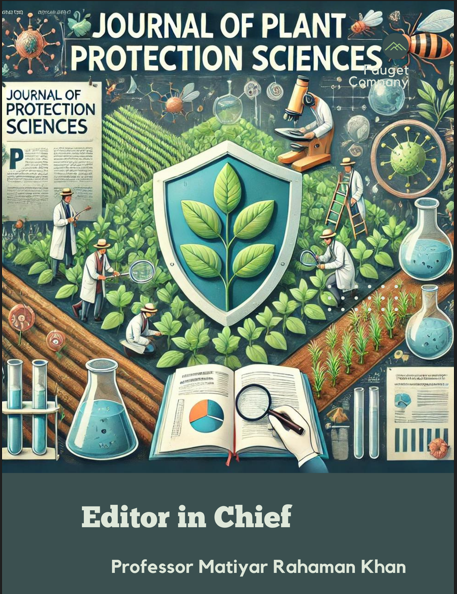Factors influencing incidence of red spider mite of tea, Oligonychus coffeae (Nietner) in Assam
DOI:
https://doi.org/10.48165/Keywords:
Red spider mite, Oligonychus coffeae, incidence, meteorological factorsAbstract
During the experimental period all data on meteorological factors viz., temperature (maximum and minimum), relative humidity, total rainfall and bright sunshine hours were collected for the entire period of study from the Department of Agrometeorology, AAU, Jorhat.The incidence of red spider mite, Oligonychus coffeae on tea leaves was maximum during month of April to May-June and September-October (2011). The minimum number of mites was recorded from July- August and November (2011) to February (2012). The data taken from 1st week of April, 2011 to last week of March 2012. In case of eggs population, there was a gradual increasing trend in egg number to reach the peak population in the month of April. From April to June overall higher population of eggs/leaf was noticed. Afterwards sharp decline in number of eggs was noticed during July and August. Again population of eggs was increased during September and October. Very minimum population of eggs was observed from Novem
ber to January. Population of eggs was started increasing again from 1st week of February to March. Results of the present studies showed that the buildup of the red spider mite, O. coffeae population, as well as the number of eggs had a significantly positive correlation with the maximum temperature(r=0.320 and r=0.286 for the mites and eggs, respectively) and minimum temperature (r=0.268 and r=0.279 for mites and eggs, respectively). Whereas the motile stage of red spider mite, O. coffeae and eggs had a negative and significant correlation with average relative humidity (r = -0.357 and r = -0.282 for mites and eggs, respectively).
References
Anonymous. 2010-2011 57th Annual Report, Tea board of India: Tea Board website: http:// tea board.gov.in/
Banerjee B. 1979 Intra-tree variation in the distribution of the tea red spider mite, Oligonychus coffeae (Nietner). Acarologia 21: 216-20.
Cranham JE. 1966 Tea pests and their control. Annual Review of Entomology 11 : 491-14.
Das GM. 1959 Bionomics of the tea red spider mite, Oligonychus coffeae (Nietner). Bulletin of Entomological Research 50: 265-74.
Das GM. 1965 Pests of tea in North East India and their control. Memorandum No. 27 Tocklai Ex perimental Station, Tea Research Association, Jor hat,169-73pp.
Das GM Das SC. 1967 Effect of temperature and humidity on the development of tea red spider mite, Oligonychus coffeae (Nietner). Bulletin of Entomological Research. 57: 433-36.
humidity (r = -0.357 and r = -0.282 for mites and eggs, respectively) (Fig 6 7). Thus, there was a significant impact of abiotic factors on the build up of mite and eggs population dur
ing 2011 and 2012. Similarly Rajkumar et al (2005) reported that the incidence of mite, Tetranychus urticae on Jasmine was maxi mum during the first week of November and there after no mite population was observed during third week of November to last week of January. Further they reported that maxi mum and minimum temperature had positive while, rainfall, morning and evening relative humidity recorded negative significant rela tionship with mite population.
Gotoh T Nagata T. 2001 Development and reproduc tion of Oligonychus coffeae (Acarina: Tetranychi dae) on tea. International journal of Acarology 27:293-98.
Mukhopadhyay A Gurusubramanian G Somnath R. 2009 A preliminary toxicological study of com monly used acaricides of tea red spider mite (Oligonychus coffee Nietner) of north Bengal, India Resistant Pest Management Newsletter. 18 :7-10.
Muraleedharan N Chandrasekharan R. 1981 Observa tion on the seasonal variation of Acaphylla theae (Watt) and Calacarus carinatus (Green) in a tea field at Anamallais (South India). Pestology 5(6): 11-15.
Muraleedharan N. 2006 Sustainable cultivation of tea. In Handbook of Tea Culture. Valparai, India: UPASI Tea Research Foundation.
Rajkumar E Huger PS Kattimani KN. 2005 Seasonal incidence of red spider mite, Tetranychus urticae Koch. (Acarina:Tetranychidae) on jasmine. Karnataka Journal of Agricultural Sciences 18(1): 150-30.

